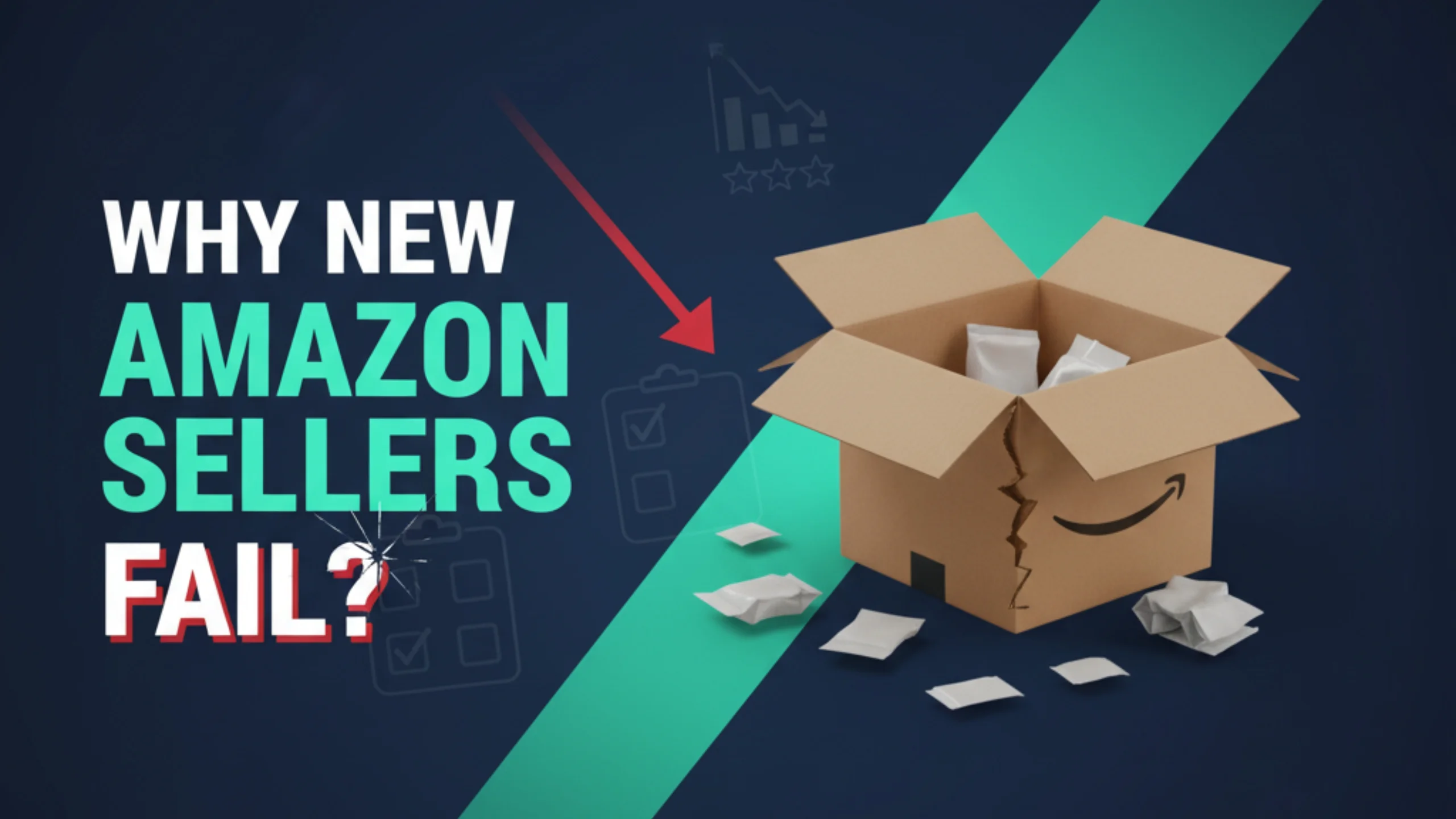Unrealistic Expectations and Lack of Planning
Many beginners approach Amazon with the mindset that it’s a quick path to wealth. They underestimate startup costs, ongoing reinvestment, and the time needed to see results. On top of that, they often ignore the massive competition and complexity of the marketplace. Without a solid business plan and realistic expectations, sellers quickly burn out when they don’t make profits as fast as they expected.
Poor Product Research and Selection
One of the biggest mistakes new sellers make on Amazon is selecting products without doing any research. Many new sellers enter into a very saturated market or just chase short-term trends and get demotivated when they make less profit than expected. That's why it's important for new sellers to use research tools like Helium 10 or Jungle Scout to get accurate results for the demand, competition, and profitability of their product. Failure to find underrated niches causes their listings to de-rank against thousands of similar listings, making it impossible for them to stand out.
Weak Differentiation & Lack of Branding
Almost every new seller struggles in another place because their product looks exactly like others. Offering same or copycat items without any uniqueness or customization is the main reason why buyers purchase from established brands instead of them. In addition, without spending on Brand Building, Brand Identity like Trademarks, Amazon brand registry or A+ Content, almost every new seller fails to build trust and unique identity. In a crowded marketplace like Amazon, lack of uniqueness means getting lost in the crowd.
Bad Pricing Strategies
Pricing is a very important factor in an Amazon business because pricing can either make or destroy an Amazon business. Sellers who sell their products at a higher price than the market price lose customers because people in the market are selling the same at a cheaper price, whereas sellers who sell products at a cheaper price than the market price lose their profits and due to this the customers consider the product to be of bad quality. Sometimes sellers ignore the change in seasons and the pricing trend of their competitors, due to which their sales cannot remain sustained or consistent. In the absence of such a balanced strategy which is created by considering customer perception and market, then sellers will either have difficulty in attracting buyers or there will be failure in sustaining profit.
Low Product Quality & Poor Quality Control
If you have bad quality products to save your time, money and effort, it will definitely fail. Many sellers outsource cheap products without doing any research or inspection, due to which they have to face high order returns, complaints and bad reviews. Products that do not meet Amazon's Product Quality Standards can result in account suspension or account ban. Negative feedback or reviews also damage the account's health and reputation, which is very difficult to recover. In the long run, poor quality control will cost more than saving.
Ineffective Listings & Poor Presentation
If you outsource a high quality product, it may not sell if your listing itself is useless, poor descriptions, and lack of necessary targeted keywords make it very difficult for buyers to find that product, which affects your sales. Low quality pictures and absence of videos reduce trust and conversions. Many sellers ignore proper SEO optimizations due to which their listing does not rank in search results. Without optimized content, it is a failure for sellers to generate clicks and consistent sales on the product.
Inventory Mismanagement
Poor inventory planning is also another reason for many sellers to fail. Overstocking can result in a shortage of your cash and Amazon’s excessive storage fees, while understocking can result in a shortage of your stock which hurts your ranking and sales. Many new sellers do not accurately forecast demand, which leaves them unprepared for peak seasons or sudden drops. Without an accurate inventory strategy, sellers either waste money on more stock than needed or lose revenue by missing opportunities.
Ignoring Marketing and Promotion
Another mistake many new sellers make is relying only on organic sales. In such a high competition, visibility is required to sell products. Skipping Amazon Ads, coupons, or promotions means missing valuable opportunities to attract buyers. Apart from Amazon, ignoring social media, influencer marketing, or current promotions limits your growth. Without a strategic marketing strategy, even high quality, strong products struggle to standout or generate consistent sales.
Neglecting Customer Service
Many new sellers fail to notice Amazon customer service, while Amazon customer service is very critical. Slow responses to buyer queries builds frustration, while ignoring negative reviews or feedback lacks trust. Skipping simple practices like product inserts, follow-up emails, or after-sales support means missing out on a chance to build loyalty. Poor support quality not only reduces repeat purchases but also harms seller ratings, which directly affects visibility and long-term success.
Overlooking Amazon’s Policies
Amazon runs on strict policies, and many new sellers fail because they fail to understand these policies properly. Violating rules like selling restricted products, posting fake reviews or breaking trademark rules lead to immediate suspension. Even small mistakes put the account at risk due to lack of awareness. Sellers who are not updated with Amazon guidelines harm their own business before it can grow.
Financial Mismanagement
Many sellers overlook the financial side of running an Amazon business. Failure to track fees, shipping costs, and returns means eating up your profits. Poor cash management is very difficult to cover reinvestments or unexpected expenses. Moreover, some sellers spend their earnings instead of reinvesting them to scale the business. Without smart financial management, even high sales result in very little or zero profit.


